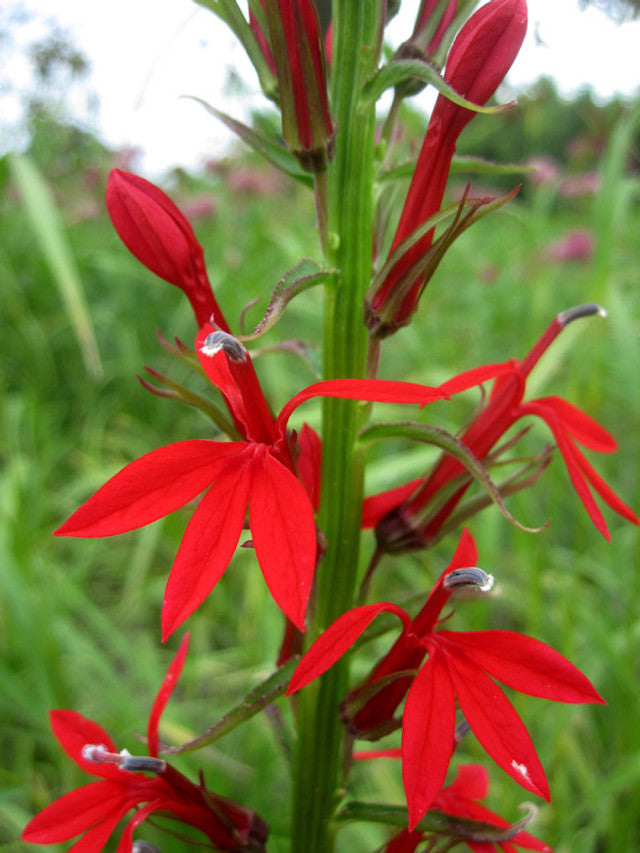
Cardinal Flower
The Cardinal flower (Lobelia cardinalis) is one of the most striking native perennials you can grow, known for its brilliant scarlet blooms that seem to light up the garden from midsummer into early fall. Its tall flower spikes, often reaching 2 to 4 feet, are packed with tubular blossoms that are perfectly shaped for hummingbirds, making it one of the best native plants for attracting these dazzling visitors.
Where to Cardinal flowers grow?
Native to wetlands, stream banks, and moist meadows across much of North America, cardinal flower thrives in rich, consistently damp soil and full sun to partial shade. In a garden setting, it’s an excellent choice for rain gardens, pond edges, or any area that stays evenly moist. While it can tolerate some drier conditions once established, it performs best with regular watering—especially during hot spells.
The foliage forms a neat basal rosette in spring, sending up strong, upright stems in summer. The intense red flowers appear in succession from the bottom of the spike upward, creating a long-lasting display. The vivid color not only attracts hummingbirds but also draws in butterflies and other pollinators. Few plants offer such a dramatic show with so much wildlife value.
While its bold red blooms steal the spotlight, cardinal flower also serves an ecological role.
Cardinal flower is grown for its brilliant red flowers, which attract pollinators, and its ability to grow in areas where other plants may not do well. It can be used in a variety of garden settings, including as a mass planting along the edge of a pond or as an accent plant in a perennial border. Cardinal flower can also be added to native wildflower mixes.




